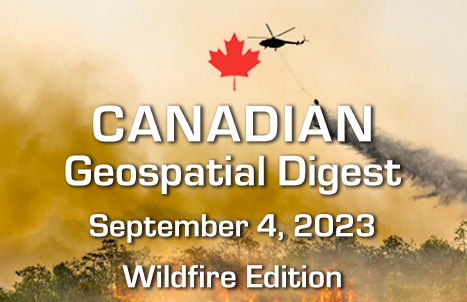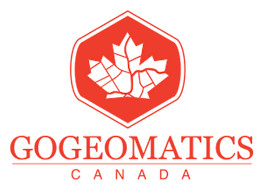
- Tracking the dimensions of the record-breaking wildfires in Canada
- Strengthening Canada’s Wildfire Management with WildFireSat
- Adding drones to the fight against Canadian wildfires
- Mapping Canada’s Forest Fire History Over 100 Years
- Things you must understand regarding online fire maps
- Wildfire Maps 2023: Monitoring Canadian Wildfires and Air Quality
Tracking the dimensions of the record-breaking wildfires in Canada

More than 1,000 active fires, among which almost two-thirds are out of control, make this year’s wildfire season in Canada the worst on record. Tens of thousands of individuals have been forced to leave their homes due to the wildfire outbreak, and the military has been sent into certain areas as a result. In comparison to 2022, the flames have consumed an area of land equal to 15.3 million hectares, or the size of New York state. The hardest-hit areas include British Columbia and the Northwest Territories, where more than 650 fires have been deemed “out of control.” The number of acres burned this year is more than double that of the previous record set in 1995, creating considerable difficulties for air quality and firefighting operations. Read more in detail here.
Strengthening Canada’s Wildfire Management with WildFireSat

A Canadian initiative called WildFireSat is scheduled to launch in 2029 with the goal of enhancing Canada’s wildfire control. Wildfires pose a growing threat to Canada, consuming about 2.5 million hectares of forest per year in an estimated 7,500 wildfires. In order to provide improved predictive skills for detecting wildfires that are in danger of becoming out of control, the mission plans to monitor all current wildfires in Canada every day from space. This would greatly lower the yearly cost of $1 billion in economic losses brought on by wildfires. In addition, WildFireSat will offer more exact data on the quality of the air, and carbon emissions, and help stop fatal wildfires. Find out more here.
Adding drones to the fight against Canadian wildfires
Over 13.2 million hectares of land have burnt in wildfires in Canada so far in 2023, which is more than double what was previously recorded form 1995. Drones are becoming increasingly useful in putting out these flames. Drones have been used by one company, Volatus Aerospace, to assist wildfire-fighting organizations in Western Canada. Thermal detectors on these drones can find hidden hotspots that might rekindle flames. While both the US and Canada use drones for firefighting, there are distinctions in how they are deployed and what they can do. Despite the difficulties, UAV technology has become more crucial in addressing Canada’s escalating wildfire threat. Collect details here.
Mapping Canada’s Forest Fire History Over 100 Years

With almost 15.2 million hectares burnt, 2023’s wildfire season in Canada broke the earlier record of 7.1 million hectares set in 1995. The severity of the present year’s fire is shown by a map produced by Canadian Geographic that illustrates the area destroyed by forest fires across the nation since 1921. However, due to the restricted means of data gathering before 1975, the data are insufficient. Recent fire seasons have been more intense due to climate change, with the north of Canada warming at a rate four times greater than the world norm. The ecosystem of the boreal forest has been impacted by the increasingly frequent and intense wildfires brought on by this warming and other variables like El Nio. Read more here.
Things you must understand regarding online fire maps
Online fire maps are becoming a more important tool for Northwest Territories residents to track wildfires posing a threat to their neighbourhoods. However, there are some misunderstandings and concerns about these maps’ timeliness and accuracy as a result of the increased attention they have received. The maps mostly show hotspots, which are regions of intense infrared light that generally represent fires. Hotspots are useful for increasing the public’s understanding of fire activity, but they are not always reliable since smoke or clouds might cover them up. The relevance of local knowledge in fire management is emphasized by experts, who advise citizens to utilize these maps as supplemental information and depend on the information provided by the territory’s wildfire agency for essential decision-making. Read more about this here.
Wildfire Maps 2023: Monitoring Canadian Wildfires and Air Quality

With 1,063 flames, 695 of which are out of control, and mostly hitting British Columbia, the Northwest Territories, Yukon, Alberta, Quebec, and Ontario in 2023, Canada is dealing with its worst wildfire season of the twenty-first century. The nation’s worst-ever wildfire calamity has already devoured more than 15.6 million hectares of land. By 2050, Canada’s wildfire burnt area is anticipated to have doubled due to droughts and heat waves brought on by climate change. The maps on this page show yearly burnt areas, ongoing wildfires, and the Air Quality Health Index (AQHI) for Canada. It also discusses the health issues connected to the worsening air quality brought on by wildfires and provides safety tips. Check the more information on maps here.
Dive deeper into the current situation by visiting these supplementary links to news sources and interactive wildfire tracking tools:
- https://www.ctvnews.ca/climate-and-environment/conditions-improve-in-b-c-worsen-in-n-w-t-what-the-latest-wildfire-map-from-nasa-shows-1.6529514
- https://www.castanet.net/news/Salmon-Arm/443582/CSRD-to-implement-notification-system-to-contact-residents-impacted-by-north-Shuswap-wildfire
- https://www.cbc.ca/news/canada/north/mayo-talbot-creek-wildfire-evacuees-1.6930643
- https://www.gov.nt.ca/en/newsroom/nwt-emergency-response-update-august-28-2023-600-pm
- https://wildfires.service.yukon.ca/
- FIRMS US/CANADA
Fire Information for Resource Management System US/Canada: https://firms.modaps.eosdis.nasa.gov/usfs/map/#t:adv;m:advanced;d:2023-08-22;l:landsat,noaa20-viirs,viirs,modis_a,modis_t,countries,forecast-ca-hist,admin-ca;@-112.8,59.4,4.7z - Canadian Interagency Forest Fire Centre: https://www.ciffc.ca/index.php?option=com_content&task=view&id=59&Itemid=129
- Alberta Wildfire Status Dashboard: https://www.arcgis.com/apps/dashboards/3ffcc2d0ef3e4e0999b0cf8b636defa3
- BC wildfire service: https://wildfiresituation.nrs.gov.bc.ca/map
- Environment and Climate Change Wildfire update: https://www.gov.nt.ca/ecc/en/services/wildland-fire-update/nwt-live-fire-map
- Firesmoke Canada: https://firesmoke.ca/forecasts/current/
- Traveller information system: https://drivebc.ca/
- BC Air Quality:https://www.env.gov.bc.ca/epd/bcairquality/data/aqhi-table.html
- EmergencyMapBC: https://www.arcgis.com/apps/webappviewer/index.html?id=950b4eec577a4dc5b298a61adab41c06
- Canadian Wildland Fire Information System: https://cwfis.cfs.nrcan.gc.ca/home





Be the first to comment